





















Shirley Pandya Neuroscience and Computer Science, Class of 2025
Editor-in-Chief, UMiami Scientifica
Dear Reader,
Welcome, and thank you for opening Issue 29 of Scientifica Magazine during a milestone moment: our 10-year anniversary and UM's centennial anniversary! Whether you are a long-time reader or stumbled across this issue on one of our stands, you are now a part of our community that thrives on curiosity, creativity, and the diversity UM has to offer.
As I graduate after four unforgettable years with this team, I am filled with gratitude. Following in the footsteps of brilliant editors like Veronica Richmond, it has been an honor to lead the team behind this issue. The theme was inspired by the connections, international collaborations, and discoveries that have shaped my time at UM. You'll find students blending their academic passions with their hobbies and personal identity, creating work that spans continents, classrooms, and conversations. Our staff put their heart into this magazine, and I hope it encourages you to think globally and dream boldly.
Scientifica is a uniquely positioned publication that knows no bounds. Our mission is to make science feel engaging, personal, and relevant to everyone. If you're curious about the world around you and want to be part of our storytelling mission, we would love to have you on the team.

Welcome to Issue 29 of Scientifica, "Beyond Borders." This spring 2025 edition beautifully captures science transcending geographical and disciplinary lines. Our talented team of undergraduates has created a compelling collection. Explore articles on AI in drug development, viral reservoirs, inspiring women in science, and the hidden heroes of the space race. The "Beyond Borders" theme shines through, from international collaboration in "Unity by Ice" to Cuban innovation with the CimaVax vaccine. We also delve into European fashion's global inspirations and the dedicated paths of PhDs. This issue covers vital health topics like autoimmunity and the Human Cell Atlas project, showcasing our team's relentless curiosity. Their ability to make complex science engaging is commendable. I encourage you, the reader, to immerse yourselves in this issue and appreciate how knowledge knows no bounds.


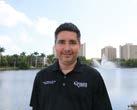
Roger I. Williams Jr., M.S. Ed. Director, Student Activities Advisor, Microbiology & Immunology Editorial Advisor, UMiami Scientifica

Shirley Pandya
Ella Crisologo
Chaunté Lewis
Ethan Tieu
Aarohi Talati
Michelle Orozco
Yewande Shitta-Bey
Michel Huyghe
Emily Danzinger
Vrinda Gupta
C O R E T E A M
EDITOR IN CHIEF
MANAGING EDITOR
ART & DESIGN DIRECTOR
DIRECTOR OF WRITING
COPY CHIEF
DIRECTOR OF PHOTOGRAPHY
DIRECTOR OF DISTRIBUTION
DIRECTOR OF COMMUNITY OUTREACH
DIRECTOR OF FINANCE AND ADVERTISING
DIRECTOR OF PUBLIC RELATIONS

Barbara Colonna Ph.D.
Senior Lecturer
Organic Chemistry
Department of Chemistry
Richard J. Cote, M.D., FRCPath, FCAP
Professor & Joseph R. Coutler Jr. Chair
Department of Pathology
Professor, Dept. of Biochemistry & Molecular Biology
Chief of Pathology, Jackson Memorial Hospital
Director, Dr. Jonn T. Macdonald Foundation
Biochemical Nanotechnology Institute
University of Miami Miller School of Medicine
Michael S. Gaines, Ph.D.
Assistant Provost Undergraduate Research and Community Outreach
Professor of Biology
Mathias G. Lichtenheld, M.D.
Associate Professor of Microbiology & Immunology
FBS 3 Coordinator
University of Miami Miller School of Medicine
Charles Mallery, Ph.D.
Associate Professor
Biology & Cellular and Molecular Biology
Associate Dean
April Mann
Director of the Writing Center
Catherine Newell, Ph.D.
Associate Professor of Religion
Leticia Oropesa, D.A.
Coordinator Department of Mathematics
*Eckhard R. Podack, M.D., Ph.D.
Professor & Chair
Department of Microbiology & Immunology
University of Miami Miller School of Medicine


Adina Sanchez-Garcia
Associate Director of English Composition
Senior Lecturer
Geoff Sutcliffe, Ph.D.
Professor of Computer Science
Yunqiu (Daniel) Wang, Ph.D.
Senior Lecturer
Department of Biology
*Deceased
Dominique Thomas
Nina Adrineda
Jess Foster
Ella Crisologo
Chloe Lee Ethics News Research Health Profiles
Shirley Pandya
Olivia Hennon
Chaunté Lewis
Jess Foster
Dominique Thomas
Ella Crisologo
Nina Adrineda
Chloe Lee
Marco Porter
Nahim Islam
Alexander Serrano
Veronica Richmond
Chaunté Lewis
Kristina Majkic
Ashleigh Morris
Lucy Xu
Dominique Thomas
Alexander Serrano
Salina Yathiraj
Jolie Janulis
Jannatul Mawa

Kasey Moriarty
Kristina Majkic
Michel Huyghe
Ashleigh Morris
Roxio Ortiz
Kelsie Barnard
Shreya Kumar
Nina Cottone
Bridget Dowd
Yewande Shitta-Bey
Milana Camilleri
Lucy Xu
Jacob Sachs
Veronica Richmond
Chris Castro



As a highly active research university, UM hosts many professors
In Iran, Dr. Hadis Dastgerdizad Elyaderani worked for 13 years as a quality manager and health education specialist within hospitals. However, since moving to the United States, she has focused on preventing hospitalizations by providing insight into nutritional health. Noticing a disparity in the nutritional health of the immigrant and refugee populations in the metro Detroit area, Dr. Elyaderani collaborated with the USDA as part of her PhD research to improve the health of these populations through independently-owned grocery stores. Following their thorough evaluation, she worked with these stores to implement more effective marketing strategies, such as providing healthy food recipes and including easier-to-understand labels.
At UM, Dr. Elyaderani works with the Florida Food Policy Council and as an associate professor of Global Health Studies to initiate interdisciplinary discussions of public health. Additionally, with its diverse population, Miami offers a unique environment to continue her study of nutrition and effective health initiatives. Just as she did in the metro Detroit area, she will investigate the extent to which grocery stores in Miami can provide ethnic enclaves with access to nutritious food. Understanding these groups’ initial exposure to nutrition is crucial to improving their well-being. As she tells her students, “Try to be more culturally competent every day, because [it] is the golden key to working with different people.”
Dr. Catherine MacDonald is a marine conservation biologist who primarily, but not exclusively, studies sharks. After completing her PhD under her advisor Dr. Kenneth Broad at the Abess Center, she stayed at the University of Miami to teach at the Rosenstiel School, drawn by the students’ interest in marine conservation. While Miami was not her initial plan, Dr. Catherine MacDonald has found her work at the University of Miami Rosenstiel School incredibly rewarding thus far. She spends over 100 days a year in the field tagging and collecting data on marine organisms. In one of her most recent studies, she and her group discovered a novel nursery habitat on the Eastern Coast of the United States for Great Hammerhead sharks in Biscayne Bay. As these sharks are critically endangered and vital to ecosystem health, the identification of their reproductive habitats is a crucial puzzle piece in marine conservation.
Beyond Dr. MacDonald’s role as the Director of the Shark Research and Conservation Program, she leads the Field School, where she advocates for expanding opportunities in marine conservation for people of all backgrounds. The Field School offers full scholarships for every training course they run to individuals who are economically
disadvantaged, works closely with Minorities in Shark Science to host weekend and week-long events, and organizes a drag-and-tag event, with proceeds directly benefiting Pridelines. “I think that almost everybody’s career path is a mix of the things that interest them and the doors that open to them,” Dr. MacDonald remarks. As she continues her work in the field, she remains committed to these initiatives at the Field School.
The Amazon rainforest is a large expanse of tropical forestry in South America, covering nearly as much land as the continental United States. Although their research has taken separate paths, Dr. Rosser & Dr. Feeley cemented their passion for tropical systems through their experiences in Costa Rica.
When Dr. Kenneth Feeley arrived in Costa Rica during his undergraduate career, he discovered a passion for tropical forests and realized that he could not ignore the variety of issues that humans were partially responsible for. Since then, one of his largest research goals has been to investigate the effects of climate change on the plants and animals living within tropical regions. Through their hikes up the Andes, Dr. Feeley and his graduate students have documented that, as global temperatures increase, plants in the rainforest are growing at higher elevations and seeking habitats with cooler temperatures.
Dr. Kenneth Feeley’s time is split between mentoring graduate students, teaching undergraduate courses, and continuing his research in the tropics. Despite his many commitments, his group publishes nearly 30 papers a year, which he attributes to both collaboration and the dedication of inspired individuals. As he tells Scientifica Magazine, “Science is no longer kind of a one-person show. There’s no way you can do anything alone.” Through their ongoing collaborations and projects in Africa, Asia, and South America, Dr. Feeley and his graduate students aim to understand and assess the global implications of climate change.
Dr. Neil Rosser was drawn to Costa Rica with an interest in conservation and biodiversity. As his interests in insects and plants grew after working at the National Institute for Biodiversity in Costa Rica, he earned his PhD through original research on the speciation occurring within Heliconius butterflies found in South America. In one of his studies published in 2024, he details that although there were indeed many barriers to mating between species, the Heliconius elevatus species displayed hybrid origins, indicating its formation from the interbreeding of two distinct Heliconius species. Moreover, according to genomic sequencing, the Heliconius elevatus seems to have remained reproductively-isolated for 180 thousand years. This breaks the typical notion of how speciation, or reproductive isolation, occurs. Instead of geographic barriers leading to isolation, this species appears to have formed through the introgression of genes from two distinct species.
“The thing about Heliconius is there’s probably nothing special about them,” Dr. Rosser states. While the Heliconius butterflies provide useful insight into speciation through hybridization, it is important to acknowledge that many other species have also been observed interbreeding. To name a few, lions and tigers, donkeys and horses, and even the Egyptian geese and Muscovy ducks living by Lake Osceola can all produce hybrid offspring. Heliconius elevatus may be but one of many examples of introgressed species. Outside of his responsibilities as a professor for undergraduate students and an advisor for his incoming graduate students, Dr. Rosser aims to continue his research at the U by investigating the Zebra Longwing, Miami’s native Heliconius butterfly species. In Miami, invasive species pose a significant concern, ranging from Burmese pythons in the Everglades to the invasive Australian Passiflora. As the Zebra Longwings utilize native Passiflora as both a food source and location to lay their eggs, Dr. Rosser seeks to determine if these butterflies will utilize the invasive Passiflora in a similar manner. Would they lay their eggs on the invasive plants, or would they be unable to recognize them due to the heavy coevolution with native plants?
Universities are institutions where academics from all over the world come together to educate students and conduct original research. Investigating unique, unanswered questions, their goal is to understand whichever aspect of the world they may choose. These brief introductions to the four professors have hopefully prompted you to consider the question, “What does it mean to discover knowledge?” You could take a page from Dr. Rosser’s book to take a year after graduation from university to learn Spanish and save money for a trip to Costa Rica. Alternatively, you could follow a path like Dr. MacDonald’s, building a career that follows your passion in the university where you earned your PhD and becoming someone who actively opens doors for others. Each professor’s story should serve as a reminder that every academic journey is different: it can take you across the globe, it can lead you to one place, or it could take years to accomplish. Although there is no one right answer, the discovery of knowledge begins with a passion and continues with the effort put into traversing the path one is presented with.


by alexander serrano design: chaunTé

by Salina Yathiraj | Design: Dominique Thomas
It has been estimated that 10^60 small molecules theoretically exist in the realm of medicinal chemistry. That is, 1 followed by 60 zeros of potential molecules that could provide treatments for the entirety of human ailments and diseases. Until now, this concept has existed only in theory; however, with the recent development of Artificial Intelligence, this elusive scientific feat may be on its way to becoming a reality.
Traditionally, developing a drug for widespread clinical use takes decades. This long and meticulous process begins with identifying a target molecule. This target molecule should be integral to the gene regulation and/or intracellular signaling of the disease of interest. This target molecule must also be “druggable” or, in other words, have the ability to be modulated by another compound. Once a viable target m has been chosen, experimenters begin looking for compounds with therapeutic potential. However, this process is both laborious and expensive. Hundreds of hours go into, simply put, hit-or-miss experimentation to identify the best possible compound candidates. However, with the advent of AI, numerous labs and pharmaceutical companies have seized the opportunity to revolutionize drug development.
In Monrova, California, a company known as Terray Therapeutics has recently integrated generative AI, which shows great promise in streamlining the drug development process. So how does one company intend to explore the entire breadth of theoretical small molecules in the hopes of discovering “the one”- a molecule or set of molecules that can be used to treat the disease of interest? According to the Terray Therapeutics website, their experimental platform uses generative AI to optimize chemical experimentation and “leverage the full power of modern computation”. This process entails three major components: Diversity Library Screening, Focus Library Screening, and Generative Drug Design. Firstly, a broad screening is completed using tArray chips containing the company’s diversity libraries. These libraries consist of nanobeads, each synthesized with a unique combination of molecules tagged with DNA barcodes for identification. These beads are then randomly assorted into 32 million wells on a singular chip the size of a nickel known as the tArray chip. The position of each molecule is mapped by sequencing the DNA barcode, which is then cleaved after the position has been determined and recorded. The target, or ligand, is tagged with a fluorescent molecule to analyze target-ligand binding affinity.


The resulting fluorescence intensity upon target-ligand binding is indicative of the binding affinity. Binding affinity can determine potency, affect selectivity, and influence dosing and efficacy. The results from this first stage of experimentation identify hit data that is sequentially analyzed in the Focus Library Screening for or lead optimization. Essentially, this means machine learning models intake hit data or molecules that show promise and create a more focused library for potential matches for the target molecule. These hits are also resynthesized and further tested before entering the last stage. 25TBs of image data from the second stage are then processed using multi-modal contrastive pretraining machine learning, which involves training models on multiple types of data simultaneously and using contrastive learning techniques for distinction. In the last stage, generative AI intakes the processed data to create ligand-based and structure-based machine learning models. These models can then be used to design optimized actionable molecules for clinical testing. Terray has partnered with Bristol Myers Squibb and Calico Life Sciences to tackle age-related diseases. Additionally, Terray is developing drugs for lupus, psoriasis, and rheumatoid arthritis, and the company anticipates that if all goes well, they will have drugs in clinical trials by 2026.

“isomorphic mapping” of complex biological phenomena. Recently, Isomorphic Labs and Google DeepMind developed an AI model known as AlphaFold 3 (AF3), which “can predict the structure and interactions of all life’s molecules with unprecedented accuracy”. In the context of drug design, protein-ligand and antibody-target protein interactions can be visualized by the AF3 without the direct input of any structural information. In fact, this AI-based visualization is on par with or even arguably outperforms physics-based biomolecular structure prediction models. AF3 structure visualizations will be an invaluable tool to researchers seeking thorough insight into molecular interactions. Researchers will even be able to model chemical modifications to specific molecules that mimic cellular disruption caused by disease. However, this AI model does have
its limitations, such as stereochemistry, dynamics in solution, low confidence disordered regions, and overall accuracy for certain targets. Regardless, AlphaFold 3 along with other AI models, are driving the drug development industry forward.
While the introduction of AI has caused fundamental changes in the way labs and research companies have approached drug development, the ultimate goal remains the same: creating safe and effective drugs to treat human disease. The introduction of AI in drug development has allowed for the acceleration of lead discovery and optimization of the analysis of complex biological data. However, balancing these recent innovations with proven methods should be paramount. Researchers should validate AI predictions through conventional testing and experimentation, recognizing the need to generate a large number of predictions and rank them to improve the accuracy of these models. Although the preclinical, clinical, FDA, and post-market stages of drug development are long, AI has enhanced the beginning stages of drug development significantly. It’s a long road tackling the entirety of human disease; however, AI provides us with the ability to go from 10^60 to 1.
By JoLie JanuLis design: chaunté
Your DNA isn’t all yours. It may be—quite literally—what defines you, but sprinkled within are parts of “foreign” DNA inserted by viruses. Our genome is made up of 8% viral DNA – a whopping 248 million base pairs. How does it get there? How might a virus’s DNA meld with our own? The answer is simple: retroviruses.
The typical viral infection process is simple. The virus, or its genome, enters the cell through a variety of mechanisms. For example, the virus may cause the cell to engulf it in a process called endocytosis. Other viruses simply insert their DNA or RNA into the cell. Once that genetic material is inside the cell, it hijacks the host cell’s protein-making machinery, including its ribosomes, and often its DNA replicating proteins, in order to replicate themselves and translate their genetic data into proteins. In doing so, the virus is able to make many copies of itself called virions. These virions eventually burst out of the cell, releasing hundreds into the extracellular space, capable of infecting other cells. This is called a lytic cycle— lyse means to “break open”. But if this were how all viruses worked, then how would such a significant portion of our DNA come from viruses? It’s because there's another mode of infection: the lysogenic cycle. There is a certain class of viruses, known as retroviruses, with the unique ability to infect an individual for life, incorporating their own DNA into host DNA.
Utilizing reverse transcriptase, retroviruses have the extraordinary ability to insert their genomes into segments of our own DNA.They then follow the same infection mechanism, with one key difference—the cell often stays alive, harboring the virus within.
The virus uses this integration into our own DNA to its benefit. Both smart and sneaky, retroviruses keep cells in “reservoirs”, which are infected cells that do not produce new virus particles or express any genes. In this way, they are able to “hide” from our immune system, which can typically detect virus particles. Individuals with retroviruses, such as HIV, cannot be cured. Just as the immune system fails to recognize virus-infected cells, treatment fails to target them. Treatments, like the immune system, target viral proteins. Whether by blocking them from binding to cells or inhibiting their ability to incorporate viral DNA into their own, the treatment has no effect on a virus that “looks” just like a healthy cell and expresses none of the viral proteins necessary for treatments to target in order to be effective.
Adding fuel to the fire, retroviruses aren’t rare—take the all-
too-common Epstein-Barr Virus—you might better know it as the virus that causes “mono”, short for mononucleosis. According to the CDC, roughly 9 out of 10 people have been infected with EBV at some point in their lives. Another example is the well-known HIV, or Human Immunodeficiency Virus—a virus that can cause Acquired Immunodeficiency Syndrome, or AIDS. HIV is one of the world’s most significant public health challenges. Approximately 39.9 million individuals globally are living with HIV, often referred to in scientific writing as people living with HIV (PLWH). While 77% of these PLWH receive treatment, only seven individuals have ever been “cured” by technical measures. These cures are unreplicable medical marvels, due to the nature of retroviruses, and as such, researchers are still striving for a cure to this day, facing many challenges and unknowns along the way. It is important to understand every aspect of retroviral reservoirs as we strive for cures for these highly impactful diseases. Chances are that HIV reservoirs will be the main target of curative medicine for HIV/AIDS.
We might choose to only see the negatives in this frightening concept of foreign DNA infiltrating our own, but beauty can be found in these retroviral intricacies. We’ve been able to develop treatments, using retroviruses and their unique abilities as a proponent for the advancement of our treatment technologies. Retroviruses are now used as conductors of genetic engineering. The genes that make retroviruses harmful and virulent can be removed, and normal eukaryotic genes can be inserted instead. This non-harmful virus is able to deliver the gene to a genetically defective cell. This long-lasting and effective form of gene transfer can enable the cell to produce a healthy version of a previously defective protein.
Take cystic fibrosis (CF) patients, for example. CF is caused by an abnormal CFTR gene, which codes for an ineffective chloride ion channel on the cell surface, leading to catastrophic systemic failures. In the lungs, it causes an excess of chloride ions in the cells, pulling in water from the mucus to balance it out. As a result, a buildup of stickier mucus accumulates in the airways, leading to illness and decreased respiratory function. If the cells could instead facilitate proper chloride ion flow through the use of a non-defective gene through genetic therapy, the symptoms and devastating impacts of this disease might be significantly improved.
Although it may be unsettling that a virus could be secretly hiding in your cells, retroviruses aren’t all bad. In fact, they may turn out to be a stellar example of the good that can come from the bad, and the medical advancements that can come from the danger hidden within.

by jannaTul maWa
design:
The first. The best. The only.
A woman in STEM has to be extraordinary, the best of the best, better than all the men in the room combined. Despite this, when a little girl dreams and opens a book, she rarely sees herself.
Throughout history, women have made groundbreaking contributions to science, yet their achievements have often been
overlooked, misattributed, or outright erased. Their names are often merely listed in the back of a book or lost to time. This systemic suppression of female scientists’ work is known as the Matilda Effect, a term coined by historian Margaret W. Rossiter in 1993. Named after Matilda Joslyn Gage, a women’s rights activist who first criticized the practice of denying women credit for their ideas, the Matilda Effect remains a persistent challenge in scientific communities.
The following are a few of the many women around the world who have been hidden in the pages of history, their contributions to innovations eradicated.
Rosalind Franklin
Rosalind Franklin was born in 1920 in London and her crucial work in X-ray crystallography was instrumental in uncovering the structure of DNA. While earning a degree in chemistry from Cambridge University, she worked on X-ray diffraction techniques that provided key insights into molecular structures. Her meticulous research, particularly on DNA, laid the foundation for one of the greatest discoveries of the 20th century.
Despite her contributions, the credit largely went to James Watson and Francis Crick, who received a Nobel Prize for this research in 1962. Franklin’s pivotal photograph, known as Photo 51, provided the necessary evidence for the double-helix model, yet her role was downplayed for decades after her death.
Jocelyn Bell Burnell
Born in 1943 in Northern Ireland, Jocelyn Bell pursued a career in astrophysics despite societal expectations that discouraged women from entering scientific fields. She played a main role in identifying the first radio signals from rapidly rotating neutron stars, a discovery that revolutionized astronomy. Bell’s discovery of pulsars in 1967 while working on her PhD research was credited solely to her male supervisor Antony Hewish, who was awarded the 1974 Nobel Prize.
Her later career was dedicated to advocating for diversity in science, and in 2018, she donated her Special Breakthrough Prize winnings to fund scholarships for underrepresented groups in physics.
It’s 1917 in India. A pioneering chemist is born. Asima Chatterjee’s work focused on organic chemistry and medicinal plant research. Born in 1917 in India, she made significant contributions to the development of anti-epileptic and anti-malarial drugs. Chatterjee was the first woman to earn a Doctor of Science degree from an Indian university and was later recognized with the Padma Bhushan, one of India’s highest civilian awards. Despite her significant achievements, her work was often overshadowed by that of her male counterparts.
Chatterjee’s research was instrumental in the development of the alkaloid chemistry of plants, particularly vinca alkaloids, which have been used in cancer treatment. She also helped develop anticonvulsant and anti-malarial drugs, significantly improving healthcare in India and beyond. Throughout her career, she faced challenges as a woman in a male-dominated scientific community but remained committed to her research. She later became the first female General President of the Indian Science Congress Association, paving the way for future generations of women in Indian science. Her work continues to inspire researchers in organic chemistry and pharmacology.
Chien-Shiung Wu
Chien-Shiung Wu was a Chinese-American physicist born in 1912. Raised in a progressive family in China that valued education, she pursued physics at a time when few women did. After studying at Nanjing University, she moved to the United States, earning her
PhD at the University of California, Berkeley. She later became a key contributor to the Manhattan Project, where she worked on uranium enrichment for nuclear fission — a trailblazer in experimental physics.
Her most famous work, the Wu Experiment, disproved the long-standing principle of conservation of parity, reshaping our understanding of fundamental physics. Despite the groundbreaking nature of her research, the 1957 Nobel Prize was awarded to her male colleagues, Tsung-Dao Lee and Chen-Ning Yang, while she was overlooked. Wu continued to break barriers, becoming the first female president of the American Physical Society. She was also a strong advocate for gender equality in science, often speaking out against the discrimination faced by women in STEM fields. Her legacy remains a testament to perseverance and excellence in experimental physics.
Lisa Meitner
Born in 1878 Vienna and one of the first women in Austria to earn a doctorate in physics, Lise Meitner, an Austrian-Swedish physicist, played a crucial role in the discovery of nuclear fission, the process that would later be used in nuclear energy and weapons.
Despite facing significant obstacles as a female scientist, she became a leading researcher in radioactivity. When the Nazi regime took power, Meitner, who was Jewish, was forced to flee Austria and continue her research in Sweden. It was during this time that she and her colleague Otto Frisch conducted extensive research on radioactive elements, and provided the theoretical explanation for nuclear fission, a discovery that changed the course of history. She is known for coining the term “fission” and when its discovery was announced in 1938, Han was the only recipient of the 1944 Nobel Prize in Chemistry, while Meitner’s contributions were largely ignored. Although she never received the Nobel Prize, Meitner was widely respected in the scientific community and became the first woman to receive the Enrico Fermi Award in 1966.
Katherine Johnson
A large step for mankind wouldn’t be possible without the small steps of the human computers, the women who worked behind the scenes. This list would not be complete without Katherine Johnson, an African-American mathematician born in 1918, who played a crucial role in NASA’s early space missions. Her precise calculations of orbital mechanics were essential in sending astronauts, including John Glenn, into orbit and ensuring their safe return. Johnson's work was vital to the success of the Apollo Moon landing program and the Space Shuttle program.
Despite facing racial and gender discrimination, Johnson broke barriers in a segregated America and worked at NASA for over three decades. Her contributions were finally recognized in 2015 when she was awarded the Presidential Medal of Freedom. Her story was further popularized by the book and film Hidden Figures, which showcased the critical role that Black women played in the space race.
How many more Matildas?
The Matilda Effect is not confined to the 20th century; it dates back centuries. The list is endless. Together, we must prevent the list from getting even longer.
Addressing the Matilda Effect requires structural changes within the scientific community, including ensuring that women receive proper credit for their work, promoting equal opportunities, and challenging biases that persist in academia and research institutions.
By shedding light on the Matilda Effect and recognizing the women who have been written out of history, we take a step toward a more equitable scientific community. Women have always been integral to the progress of science — it's time the world acknowledges it.
No more Matildas.
by Kasey moriarTy design: chaunTé leWis
Fashion is a way to express one’s self, values, and sense of belonging. It has always been a powerful reflection of cultural identity and provides opportunities for growth and change. Europe is the center of fashion, and European fashion is inspired by a variety of cultures. From design and manufacturing, color palettes, fabric choices, and textile techniques to tailoring traditions, every element reflects a rich history of craftsmanship and contemporary innovation, blending heritage with modern trends. European fashion weeks are some of the most prestigious events in the global fashion industry, showcasing top designers, emerging talents, and setting trends for upcoming seasons. It also acts as an international gathering place for a variety of African, Asian, and American influences, fostering the development of newly emerging aesthetics and innovative discussions. Designers are focusing on responsibility in addition to style by using ethical production methods and sustainable materials in increasing numbers. The way that traditional artistry and modern design combine constantly redefines fashion's function as a creative and cultural force.
European designers bring artisans’ and craftsmen’s skills and heritage into the spotlight from various backgrounds. For example, high-end fashion houses have partnered with skilled artisans from India, Japan, Africa, and other countries, incorporating traditional textiles, embroidery, and techniques into their collections. Several Indian designers are prominent participants at major European Fashion Weeks, showcasing their collections with unique blends of traditional Indian aesthetics and contemporary designs, as well as handcrafted textiles and embroidery, intricate beadwork, hand embroidery and luxurious fabrics like silk and brocade. Japanese designers are known for their avant-garde and minimalist aesthetics of simplicity and harmony. Key features include monochromatic palettes, oversized silhouettes, and functional designs. African designers utilize textiles such as Ankara and kente cloth, symbolizing African heritage while empowering local artisans. They are known for their vibrant geometric patterns and have become staple pieces that add a touch of boldness in the fashion industry. With the use of textiles, it symbolizes African heritage while empowering local artisans. Collaborations between European and African fashion houses are fostering cultural exchange, blending modern silhouettes with ancestral techniques. As many regions embrace diversity and environmental consciousness, fashion remains a universal language of cultural exchange, selfexpression, and progress.
The emergence of fashion weeks in major European cities like Paris, Milan, and London increasingly feature designers from around
the world, showcasing their cultures through innovative fashion. These international designers are pushing the boundaries of European fashion and influencing trends in ways that reflect a more inclusive, globalized fashion industry. Designers put inclusivity at the forefront. Models come in every shape and size, showcasing a beautiful variety of abilities, and backgrounds, showing that beauty comes in every form. A lack of judgement has become the new norm. Models featured during fashion week in European cities are different ethnicities, gender identities, and ages. They honor values, identity and culture, bringing stories from underrepresented communities to the runway. Inclusivity in model features is about using visibility to challenge stereotypes, embrace the beauty of difference, and redefine traditional beauty standards. Numerous European collections show that fashion can be welcoming to everyone, no matter their gender or identity. Designers are also using their platforms to highlight sustainability, with many incorporating ethical production methods and eco-friendly fabrics. By blending innovation with social awareness, fashion continues to push boundaries, proving that style can be both a statement of individuality and a force for positive change. This shift highlights fashion’s role as a powerful medium for social change, and redefining norms while celebrating individuality and selfexpression.
a multitude of people together. It is important to note that fashion is more than just clothing; it is a powerful reflection of cultural exchange and historical connections. Global influences have always been reflected in European fashion, which has been influenced by centuries of trade, artistic inspiration, and cultural interchange. Innovation in the fashion business is still fueled by the junction of cultures, from historical ties made along the Silk Road to modern collaborations with designers from many backgrounds. European fashion can continue to highlight cultures around the world while respecting their authenticity and legacy by encouraging sincere partnerships and environmentally friendly practices.



arT - desIgn - dIsTrIbuTIonouTreach - WrITIng - ediTIngphoTography

by Jacob Sachs
Coral reefs are among the most biodiverse ecosystems on Earth. They host a variety of marine animals and are important to our planet. Unfortunately, climate change and other stressors pose a threat to these reefs. However, there are tiny microscopic organisms that help combat threats to these ecosystems. These organisms were first characterized in the 1880s and subsequently identified in 1902 as forming distinct green bands in the calcium carbonate of coral skeletons. They play an important role in the coral's microbiome. Unfortunately, research on this topic is limited even though research regarding ecology, metabolism and physiology has increased. Endolithic microorganisms play an important role in both coral function and sustainability, while also posing a threat through bioerosion during stressful conditions.
The most common endolithic microalgae is filamentous green algae Ostreobium spp. This species can penetrate both live and dead corals. They commonly reside in coral such as Pocillopora spp., Stylophora spp. and Acropora spp. Endolithic prokaryotes that are found in the green bands include: Plectonema terebrans, Mastigocoleus testarum, and Halomicronema excentricum. There is high genetic diversity among Endolithic microorganisms – so much so that around 90 operational taxonomic units, based on DNA sequence similarity, remain unclassified.
Endolithic microorganisms provide several ecological benefits, particularly in nitrogen cycling and primary production. Nitrogen cycling is essential because coral reefs are often located in nitrogendeficient environments. These microorganisms assimilate nitrogen and cycle it for coral usage. High concentrations of inorganic
nitrogen in the pore water surrounding the coral skeletons suggest that these microorganisms collect inorganic nitrogen and recycle it. In fact, it is estimated that they help corals accumulate 55-65% of the nitrogen they need, through processes like nitrogen fixation and nitrification. Nitrogen fixation provides a source of nitrogen, while nitrification allows for recycling. Microorganisms also contribute to the high primary productivity of coral reefs. During the daytime, photosynthesis activity is dominant: oxygen levels increase, carbon dioxide decreases, and pH rises. At night, dominates, and oxygen is consumed, carbon dioxide increases, and pH drops. Endolithic organisms have a low metabolic rate, leading to less extreme fluctuations in their surroundings. The pH remains relatively stable with endolithic organisms, whereas in corals, it changes significantly.
But what does this mean? Endolithic microorganisms provide a stable environment for corals by mitigating extreme fluctuations in pH and by providing an organic carbon source for coral. For example, Ostreobium assimilates inorganic carbon through photosynthesis and produces organic carbon for coral. In some studies, microorganisms have contributed over 40% of the coral’s total productivity under certain conditions, while other studies report contributions of less than 4%. This variation suggests that the role of endolithic microorganisms may be significant but dependent on the environmental conditions. Further research is needed to better understand how these microorganisms affect coral populations.


Under certain conditions, microorganisms can also be harmful to corals. Bioerosion exemplifies this and refers to the biological breakdown of rock. In regards to coral, microorganisms break down the calcium carbonate skeleton. Recent studies suggest that microorganisms can lower calcium ion concentration, shifting
exploring ways to use these microorganisms in reef conservation efforts. Coral reefs are an important part of marine life and rank among the most biodiverse ecosystems on our planet. Protecting reefs requires not only scientific innovation but also global action, including reducing carbon emissions, preventing ocean pollution,


In 1959, twelve countries gathered to initiate what could be known as one of the most powerful examples of how preserving our planet is possible through global cooperation. They formed the Antarctic Treaty, using science as a tool for diplomacy to designate Antarctica solely for scientific research. This meant the countries cannot claim land, establish military bases, extract resources, or exploit the region. This treaty transcended political tensions, showing that nations could set aside their differences in the pursuit of knowledge and the well-being of the planet. It was a moment where humankind came together in pursuit of curiosity about science, and made scientific information accessible to all. As a result, discovery in the region flourished, demonstrating that Antarctic research can have a profound influence on our world in many ways.
Treaty signatories recognized that preserving Antarctica for research purposes would provide long-term benefits that far outweigh the immediate economic gains of resource extraction. The ice cores, for example, hold invaluable data on past climates, which is crucial for understanding climate change. The continent is also vital for studying Earth’s geology, biology, and ecosystems, providing insights into everything from the planet’s past climate to the universe and the potential for life on other planets.
A major discovery from Antarctica was the shape of our universe, made possible by the region’s unique geographic and climatic conditions and the treaty’s establishment of a stable environment for research. “The shape of the universe tells us about its past and its future,” as put by Princeton University cosmologist David Spergel. Antarctica is an optimal place for observational cosmology research due to its cold, dry air. The lack of moisture in the air helps to reduce atmospheric noise, improving the accuracy of measurements and reducing experimental costs.
The early 1990’s were the beginning of observations in Antarctica that would provide insights into phenomena from the first second of the universe’s existence. Cosmic microwave background (CMB) experiments were launched on a long-duration balloon from McMurdo Station on the coast of Antarctica, showing clear evidence that the overall geometry of the universe is flat, as opposed to being open or closed. This means that out of all imaginable curvatures in
space, our universe chose to be flat. This is the solution to one of the great metaphysical problems: the origin of matter. Other results include confirmations of “big bang” cosmology and insights into the formation of the first galaxies. But what does a flat universe really mean?
The universe being “flat” means that its large-scale geometry follows the rules of Euclidean geometry, where parallel lines never converge, and the angles of a triangle add up to 180 degrees. This would not be the case if you drew a triangle on a curved surface such as a sphere, where the angles would be more than 180 degrees.
The discovery of the universe’s flatness has implications for the amounts of dark matter and dark energy, the two most mysterious components of our universe. Dark matter is matter that doesn’t emit, absorb, or reflect light, yet we know it exists because it pulls things together via gravity, whereas dark energy pushes things apart, driving the universe’s expansion to speed up as time passes.
by Kristina Majkic Design: Kristina Majkic
It is like a “push and pull” relationship. Observations of the CMB suggest that about 68% of the universe's energy density is in the form of dark energy, about 27% is dark matter, and only about 5% is ordinary matter, meaning research in Antarctica has shown us that our eyes and telescopes can only see 5% of all matter! And still in the decades to come there may be insights to major unsolved problems in modern physics.
The Antarctic Treaty System has not only maintained order in the South polar region over the last 50 years, it also demonstrated a capacity to come to terms with major issues regarding competition over Antarctica’s natural resources and ecosystems. With 98% of its land covered in polar ice sheets, Antarctica seems rather mundane from the surface, but hidden under the ice are vast mountains, lakes, and canyons. There are thousands of bacterial species and traces of ancient organic material. Scientists believe there could be life hidden in Antarctica's caves—getting
Keeping this in mind, not all homeless people start out with a pre-existing mental health complication; a portion develop symptoms of mental illness as a consequence of being homeless. Some of the most common symptoms that can manifest after a period of homelessness include depression and suicidal thoughts related to the contempt and disdain most individuals receive on a daily basis while on the streets. Another common outcome of homelessness is the development of substance use disorders. Besides the increased availability and easy access to substances, people may use them to “selfmedicate”, in an effort to relieve symptoms or escape from the trepidation they experience daily. This series of events is a slippery slope, leading quickly to dependency and addiction. The fact remains that substance use disorders are chronic medical disorders that require a comprehensive plan contingent on a patient’s regular adherence, and for homeless people this is even more difficult. The instability of homelessness makes it almost impossible for someone with a substance use disorder to receive or complete treatment, making it even less likely for them to climb out of the hole of homelessness. The last, but certainly not least concerning relationship between mental health and homelessness that I want to touch on is the significant impact growing up without a stable home can have on childhood development. It has been proven time and time again that having a stable living arrangement and social connection to those around you facilitates healthy brain development
in young children. In living an uprooted life, it is unfeasible for most homeless children to come by one, if not both, of these factors. Not only this, but homeless children are more than twice as likely to suffer from infections, malnourishment, and cognitive, behavioral, and emotional complications, creating an expanding barrier to childhood development.
Overall, the lack of mental health support for the homeless population may make it seem like a unique problem that only affects the homeless, but everything boils down to the limited resources available to treat mental health, mental illness, and substance use disorders. It’s true: mental health has a stigma, regardless of housing status, resulting in a shortage of mental health workers worldwide. This lack of resources, in combination with the absence of affordable housing (a topic for another article), makes it extremely difficult to stop this bi-directional cycle between homelessness and mental health. But now that this relationship is revealed, it’s up to us to find the key. We may have to try many different sizes and shapes before finding the right one, but only together can we take the next steps in unlocking the neverending cycle between mental health and homelessness. “Click”.
heat from the volcano, sunlight through the ice, and water from the glaciers. They believe that if life can be found in bizarre environments such as this, it can also be found farther in the universe, such as the icy coverings on Jupiter’s moon Europa and other planets. This introduces a concept known as bioprospecting, where organisms could be used for medicinal or commercial purposes. It might give rise to problems in the future, as the ecosystem is so fragile.
The success of the Antarctic Treaty stands as a remarkable example of how diverse nations can come together for the greater good of the planet. The treaty has protected the Antarctic environment for over six decades, proving that global collaboration can overcome even the most complex challenges. This example of unity serves as a powerful reminder that we are capable of addressing other pressing global issues in the same way—such as the preservation of the Amazon Rainforest, which plays a crucial role in regulating the Earth's climate and maintaining biodiversity, perhaps even more critically than the Antarctic. The Amazon is home to indigenous populations and serves as a crucial carbon sink, yet efforts to protect it are hindered by political instability, land use disputes, and pressures from industries such as agriculture, logging, and mining. It is home to around 10% of the world’s known species and provides essential ecosystem services like carbon storage and water cycling. Its destruction leads to the loss of biodiversity, contributes to climate change, and displaces local communities. This contrast between the success of the Antarctic Treaty and the struggles in other regions raises an important question: What factors enabled the Antarctic Treaty to succeed where similar efforts for the Amazon or other regions have faltered? Why have we not been able to replicate this spirit of cooperation seen in Antarctica for the protection of equally vital ecosystems?
These questions invite deeper reflection on the challenges of global governance, the role of international diplomacy, and the need for commitment to environmental preservation across the globe. If the success of the Antarctic Treaty tells us anything, it is that meaningful change is possible when we transcend national boundaries. We live in a flat universe, and yet our universe bends towards unity, like the roots of our forests intertwining, becoming stronger in support of our planet. Restoration of ecosystems such as the Amazon rainforest is complex due to the many challenges it presents, but with the structure of the Antarctic Treaty System, we learn that transcending national interests is possible, and our goals in preservation are achievable.

by michel huyghe design: chaunTé leWis
n a world with cosmetic enhancements that often promote unnatural beauty standards, plastic surgery has gotten a bad reputation over the past few years. But what if we reframed the way we view this profession? What if instead of focusing on the procedures that promote unrealistic body standards, we examine the plastic surgery field as it relates to restoring natural beauty and enhancing patients’ self-image? Well, that’s what I aim to do in this article, as I spent a day shadowing one of Miami’s top-tier facial plastic surgeons, Dr. Jose Rodriguez-Feliz, for a deep plane facelift.
When it comes to the traditional facelift, the major complaint is that the skin ends up usually looking unnaturally tight. While the typical procedure addresses the fallen skin that typically occurs with aging, the underlying musculature is often not addressed. As a result, the face appears “windblown,” as Dr. RodriguezFeliz puts it. With the deep plane facelift, the underlying musculature of the face is addressed, allowing for the neck and jawline to be tightened and contoured at a muscular level. This prevents the need for stretching the skin of the face, as the skin is able to sit comfortably over the musculature, producing a naturallooking and feeling result for the patient. Despite the superior
end result, only about 5% of plastic surgeons opt for the deep plane technique due to it being far more technically challenging and often requiring specialized training. With all that said, let’s take a deep dive into my day in the operating room to see this procedure in action.
I was fortunate enough to speak with the patient, a woman in her mid-60s, prior to the surgery to talk about her motivations for undergoing the procedure. I began the conversation by asking about the patient’s relationship with Dr. Rodriguez-Feliz and how long she had been seeing him. It turned out that she’d been seeing Dr. Rodriguez-Feliz for over four years and had multiple procedures done in the past, including her eyes and ears. Naturally, I followed up with why she chose Dr. Rodriguez-Feliz in the first place, as Miami is certainly not a place devoid of plastic surgeons. She replied that a friend of hers had work done by him in the past, and she loved the way it turned out. Upon meeting Dr. Rodriguez-Feliz herself, she also recounted that his calm demeanor and soft bedside manner immediately made her confident that he was a good fit for her. Over the course of multiple procedures, she noted that her confidence in Dr. Rodriguez-Feliz has only grown, which led her to pursue her largest operation yet. I then asked if she feels the operations she’s had from Dr. Rodriguez-Feliz have improved her quality of life. She answered astoundingly, “Yes,” noting that specifically, her eye surgery was impactful, as she had one eye that was very droopy due to diabetic neuropathy. She then continued to explain how she feels the operations help match how she feels to what she sees in the mirror, saying, “You feel young, but you look at yourself in the mirror and… not so young.” She also said that her past operations have been a large motivator for her to lose significant weight and get her diabetes under control. Plastic surgery helps bridge this gap. Lastly, I asked her what her main goal was stepping out of the office today. She explained that she has lost a lot of weight and has recently gotten her diabetes under control, and now she wants to get rid of the excess skin that remains on her face and neck. She wants to look younger, but she also wants to look natural, quipping, “I don’t want to look like I’m 25.”


From this short interview, I was able to grasp much of the psyche behind pursuing plastic surgery. First of all, trust is crucial. As with any medical professional, trust is a key element, but all the more so with a surgeon you are trusting to permanently alter your appearance. Pursuing plastic surgery is a vulnerable endeavor, making your body the canvas and trusting your surgeon to give you a product that will satisfy you. Dr. Rodriguez-Feliz is able to set himself apart outside of the operating room, hearing patients’ stories and forming long-lasting relationships of trust that grow his patients’ confidence that he will time and time again deliver a product that will improve their lives. Second, the motivation for pursuing plastic surgery is so much more than wanting to “look better.” As individuals get older, oftentimes their appearance outpaces how they feel regarding age, resulting in a disconnect that can be discouraging for aging individuals. Plastic surgery, when done correctly, bridges this gap, creating a natural-looking appearance that matches the mirror with the feelings. Lastly, plastic surgery can serve as a major motivator for improving health far beyond a patient’s appearance. As the mirror and the feelings are matched, patients feel more motivated to take their health into their own hands, not letting aging get the upper hand. This may be something as small as little bits of weight loss or something as large as total body transformation and managing chronic disease symptoms, potentially adding years to someone’s life.
After interviewing the patient, I was off to get cleaned up and scrubbed in. I won’t go into depth on all the details of this 7+ hour surgery, as that would far exceed the extent of this magazine. However, I will say that watching a deep plane facelift was by far one of the most intriguing experiences of my entire life. As someone who has primarily witnessed the hammer-swinging world of orthopedic surgery, seeing the precision and delicacy
with which Dr. Rodriguez-Feliz operated was astounding. I witnessed Dr. Rodriguez-Feliz peel back the layers, altering the very musculature of the patient’s face. As he manipulated different muscles, I could see in real-time the shape of the patient’s jawline changing. As a result, the end of the procedure ends up with excess skin that needs to be trimmed away, rather than a typical facelift where the skin is stretched.
Shadowing Dr. Rodriguez-Feliz gave me a profound appreciation for the artistry and precision of facial plastic surgery. Beyond the stereotypes and surface-level assumptions, I witnessed a field dedicated to restoring confidence, bridging the gap between how patients feel and how they see themselves. For many, these procedures are not about chasing youth but about reclaiming their identity and feeling at peace with their reflection. Watching the deep plane facelift unfold, I saw firsthand how plastic surgery, when approached with care and expertise, can be transformative not just in appearance, but in quality of life.

by ashleigh morris
The development of the polio vaccine is often credited to American virologist, Dr. Jonas Salk. His breakthrough was made public in April 1955 and became a global sensation. While he was crucial in designing a safe, effective vaccine against the poliovirus, he was not the first person with the idea. Salk’s work was inspired by the research of many who came before him. In January 1948, a Polish virologist, who fled his home country a decade prior, vaccinated himself with what is considered to be the first live polio vaccine. His name has been lost to mainstream medical history, despite being seen as a crucial scientific leader of the time. His story begins in war-torn Poland.
Welcome to Warsaw
1916. Warsaw, Poland.
World War I was ongoing, and Poland was not an independent state, as it was currently under German and Russian rule. The country became a harsh example of the reality of war. Due to its geographical position, Poland experienced some of the worst forms of destruction, famine, and human loss in all of Europe. Although Poland endured an abundance of loss, many of its people displayed persistent, headstrong personalities in the face of adversity. On Dec. 5, 1916, someone with such grit was born in Warsaw, the capital of Poland. Eventually, he would become one of the country’s most prolific virologists. The man in question is Dr. Hilary Koprowski.
Hilary Koprowski was born into an assimilated Polish-Jewish family. Education was of great importance to his parents. He attended Mikołaj Rej Secondary School, a prestigious school in Warsaw. In addition to his strong educational background, Koprowski partook in piano, taking lessons at the Warsaw Conservatory by the age of twelve; music remained a passion throughout his life.
1939. Warsaw, Poland.
The outbreak of the second World War arose. During the same year, Koprowski earned his medical degree from the University of Warsaw. This accomplishment had a short-lived celebration. Not too long afterwards, Germany invaded Poland. Acting fast, Koprowski, his wife, fellow scientist Irena Koprowska (nèe Grasburg) fled the country.
1944. Pearl River, New York.
Near the end of World World II, Koprowski settled down in New York. Not too long after, he joined Lederle Laboratories, where he began research on developing a polio vaccine. This was a much desired medical advancement due to how devastating the disease was, especially towards children. The poliovirus was also found worldwide, killing or paralyzing over half a million people each year. Those who survived suffered severe consequences, often resulting in deformed limbs. Many other researchers were working on polio-related vaccines at around the same time, but Koprowski was the first success story.
Koprowski approached his project by designing a live, oral vaccine. Live vaccines utilize a weakened form of a pathogenic microbe. This was a bold approach for Koprowski, as most vaccines during this time were made using inactivated vaccines, which used wholly dead pathogens.
In 1948, Koprowski finished a vaccine. He drank a portion of the vaccine to see if it worked. By living to tell the tale, this moment officially became the first successful attempt at a polio vaccine. However, Koprowski continued to make bold decisions regarding his breakthrough, some of which were severely controversial. These decisions may have contributed to how his work became a more obscure part of vaccine history.
In February 1950, Koprowski made a second bold move that many within the scientific spaces he occupied questioned. In the first serious attempt to develop a polio vaccine, Koprowski administered the vaccine to twenty children at an institution for the physically and mentally disabled; his supervisors at Lederle Laboratories were not informed of this action. Even during a time when ethics in scientific spaces were sparse, Koprowski was greeted with shock at meetings due to the risk of the poliovirus entering the institution, a common occurrence at the time.
Miraculously, none of the children experienced negative side effects from the vaccine. Seventeen of the children developed antibodies against the poliovirus, while three were discovered afterwards to already have said antibodies. This provided more credibility to Koprowski’s work, and he started to expand his research on a more global scale.
In Pursuit of Eradication
1957. Philadelphia, Pennsylvania. Koprowski left Lederle Laboratories, and found his way to the University of Pennsylvania. He became director of the biomedical research powerhouse Wistar Institute. Koprowski was given clearance to test his vaccine in the Belgian Congo, immunizing 250,000 children in six weeks. Koprowski also worked extensively against polio in his home country. Between 1959 and 1960, nine million children in Poland were vaccinated, halting a potential epidemic from happening in the country.
While Koprowski’s work on the polio vaccine was extraordinary, he never attained the celebrity status other scientists did. By sheer numbers, people like Jonas Salk and
Albert Sabin had administered their versions of the polio vaccine to more children around the world, the latter targeting millions in the Soviet Union. Because both Salk and Sabin took inspiration from Koprowski’s work, the competitive atmosphere between the three men became heated. Years after the height of polio vaccine developments, Koprowski chose to live a quieter life.
Although the very people Koprowski inspired gained higher levels of fame for their work compared to him, he eventually came to terms with it. “Dad actually enjoyed the fact that he did not achieve the fame of Salk or Sabin. He said that would have stifled him scientifically and invaded his privacy,” said Christopher, Koprowski’s younger son, in an interview (The Independent, 2013). Koprowski continued to promote research up until his death in 2013, living an extraordinary 96 years. He proved himself to be a fine example of Polish excellence.

By: roxio ortiz | design: dominique thomas
Cuba is my home country. It’s the place where I was born and raised, and no matter where I go, my roots will always run deep in its soil. There is an island called The Pearl of the Antilles, which is known for its rich culture, incredible food, and the most breathtaking natural landscapes I have ever had the privilege to witness. However, what truly makes Cuba special in my eyes is the strength and resilience of its people. Life in Cuba is very far from easy, it is sadly a very dark place to live – power outages are frequent, access to basic necessities is unreliable, and government censorship stifles free expression to the point that people live in constant fear of sharing their personal opinions. The healthcare system, once a source of national pride, is crumbling due to lack of resources and support, making just the simple act of living in Cuba a danger to one’s life. Yet, despite these immense challenges, and on barely livable wages, Cuban scientists have made groundbreaking contributions to medicine that have had worldwide impacts. One of the most remarkable achievements to emerge from this adversity is CimaVax-EGF, a lung cancer vaccine developed by researchers at the Center for Molecular Immunology in Havana. Against all odds, these remarkable scientists have created a treatment with the potential to save lives that extends far beyond Cuba’s own borders.
Lung cancer is the most common cancer for both men and women in the United States. It is also the leading cause of cancerrelated deaths worldwide, with over 1.8 million deaths per year. The American Cancer Society has estimated that just this year there has been 226,650 new cases of lung cancer and 124,730 deaths. Traditional treatments, such as chemotherapy, radiation, and surgery are extremely invasive, come with severe side effects, and are often simply not enough to stop disease progression. Choosing between these options is an unfortunate reality that many people have had to face when diagnosed with such a horrible illness. However, CimaVaxEGF takes a different approach, it is a therapeutic vaccine designed to help the immune system fight lung cancer more effectively. Also, unlike in the U.S. or other wealthy nations, where pharmaceutical companies drive medical advancements with enormous pockets,
Cuban researchers work with extremely limited resources, relying on their own ingenuity and very little government aid. This necessitydriven approach has led to innovations that focus on accessibility and affordability, with CimaVax-EGF costing significantly less than many lung cancer therapies available in wealthier nations.
The vaccine targets the epidermal growth factor (EGF), a protein that plays a very important role in tumor growth by binding to epidermal growth factor receptors (EGFR) on cancer cells. In nonsmall cell lung cancer (NSCLC) patients, EGFR is often overexpressed, which leads to uncontrolled cell proliferation. CimaVax-EGF works by making the body produce antibodies that bind to EGF, preventing it from interacting with its receptor. This, in a way, starves the cancer cells of a critical growth signal, slowing down or even stopping tumor progression all together.
A way to visualize this is to imagine that your body is Havana or Miami, and every part of you is like a different neighborhood in that city. Think of cancer as a construction crew that keeps building harmful structures and disrupting life. Normally, your body has traffic controllers (the immune system) to keep things running smoothly, but lung cancer tricks your body into giving it unlimited fuel to keep building and building. That’s where CimaVax comes in. Instead of attacking the cancer directly, this vaccine cuts off its fuel supply. Cancer needs EGF to grow, which the body naturally makes, but lung cancer hijacks it to keep expanding. CimaVax trains your immune system to recognize and destroy excess EGF, leaving the cancer starving and unable to spread. It’s like putting up roadblocks and cutting power to that annoying construction crew, forcing them to stop. Even better, unlike chemotherapy, which attacks your healthy cells as well, CimaVax only targets the cancer’s fuel supply. While it’s not a cure, it helps people with lung cancer live longer and feel better.
A real-world study conducted at the National Institute of Oncology and Radiobiology in Cuba examined the effectiveness of CimaVax-EGF in 106 patients with advanced NSCLC. The results were very promising, patients receiving the vaccine had a median survival time of 14.6 months, with some younger and healthier patients surviving up to 29 months. Additionally, disease progression was
months and nearly 20% at a year. The vaccine also had minimal side effects; most were limited to mild injection site reactions (Survival of NSCLC Patients Treated with CimaVax-EGF as Switch Maintenance in the Real-World Scenario). Researchers are also now exploring whether CimaVax could be effective against other EGF-dependent cancers like prostate, breast, and pancreatic cancer. This showcases the great impact that this discovery has had and will continue to have in the future.
Despite the very long U.S. embargo on Cuba, American scientists have acknowledged the vaccine’s great potential. In 2016, the Roswell Park Comprehensive Cancer Center in Buffalo, New York, made a partnership with Cuban researchers to begin clinical trials in the United States. This marked a significant step in crossing borders and breaking down political barriers for the sake of saving lives. If the U.S. trials confirm its effectiveness, CimaVaxEGF could revolutionize lung cancer treatment worldwide. It could give hope to people who have tried conventional options and show the world how collaborations can lead to amazing results.
Cuba may be a small island with many many struggles, but its people have once again proven that even in the darkest circumstances, light can emerge. And in this case, that light comes in the form of a vaccine with the potential to save millions of lives.

“Cuba may be a small island with many many struggles, but its people have onCe again proven that even in the CirCumstanCes, light
by Kristina Majkic



It is commonly known that the United States doesn’t exactly have the best reputation of healthy eating. We might have been convinced these issues all came down to personal accountability: if you’re overweight, if you suffer from diabetes, if you fall victim to heart disease at an early age, you’re just lazy and irresponsible with your health. However, that point of view doesn’t account for the lack of food regulation in the United States. It does not consider how the availability of food influences people’s dietary choices. Foods we see everyday in the US are banned in many regions of the world. Some countries would even give fines of thousands of dollars if you were caught using American ingredients. So how bad can food in the US really be? Let’s uncover this.
In Europe, bakeries are at every corner, with a smell that hits you without even entering through the door. Wherever you go, food is always accessible for you to grab. This is very different from the states, where bread has lost its smell long ago, and the nearest grocery stores are a 10 minute drive. It is common in many European cultures to consume bread with every meal and every snack, as well as calorie dense foods considered “not very healthy” such as salami, kebabs, pasta, pastries, full fat raw milk, and others. So the puzzle lies not in the type of food, but what is in the food and how it is made. And US food industries excel in secretly marketing ultra-processed foods under decent-looking labels.
By definition, the term “processed” just means a food has undergone a change from its natural state. This can include cheeses, wines, apple pies, etc. That being said, it isn’t processed foods that are bad, but the real concerns are ultraprocessed foods. By definition, ultra-processed foods are formulations of ingredients, mostly of exclusive industrial use, typically created by a series of industrial techniques and processes. It means manufacturers break down foods all the way to their molecular level, and separate them by starches, fats, sugars and others to form a “slurry.” They take this “slurry,” and now have the ability to design anything they could dream of. It isn’t food we are eating, but edible, food-like products.
This creates various disturbances in our bodies and here’s how it works: When we consume food that has already been broken down in a factory, our body then doesn’t have to complete its natural process to break down food on its own, as the process is already partially completed. The body is essentially intaking “predigested” food. In this way, the process happens so unnaturally fast that the body doesn’t get to reach the signal of fullness to the brain. This explains how people are still hungry and that obesity rates have been skyrocketing since the 80s, the time when ultra-processed foods took flight. While the signal
of fullness doesn’t reach your brain, other chemical signals do hit your nerve cells very quickly. Known as the concept of “rate of delivery,” the faster the substance reaches your brain, the more addictive it gets. This can be anything, and the basic starting ingredients are all the same. Processed sugars, starches, and fats. Then add onto that the endless possibilities provided to us by food science, such as artificial hormones, additives, dyes, gums, modified milk ingredients, and emulsifiers. Foods that you’d never expect to be ultra-processed junk foods, are. Including almost all types of: cereals, frozen dinners, even most of the healthy-looking ones, nearly every food marketed to children, as well as non-dairy milk and plant-based products, about 95% of everything in the health and diet food aisles, including protein bars, and beverages like energy drinks. And the problem is not that these products exist, but that they are most of what you see at the grocery store. And many people don’t know the extent to which they are being tricked.
A clinical trial was done in 2019 where 20 healthy volunteers were locked from the outside world for one month. The first 2 weeks they spent eating only ultra-processed food. For the other 2 weeks they ate a diet of only minimally processed food. Each diet consisted of the same quantity of calories, sugars, fiber, fat, salt, and carbohydrates— the only difference was that one diet consisted of food that was ultra-processed. In 2 weeks, participants of the ultra-processed diet gained an average of 2 pounds. In the next two weeks of the minimally processed diet, they lost the equivalent amount of weight that they gained the first 2 weeks. Now obviously 2 pounds in 2 weeks is nothing crazy, but think about what that does over weeks, months, and then years, of just consuming a part of what is considered a norm in today’s society. Not just that, but the ultra-processed food still increases your appetite, something that wasn’t considered in the experiment as both diets were the same in calories.
Science is starting to reveal that it is not the lack of fiber, or additional sugar, but the ultra-processed foods themselves that are the problem. There’s something seriously strange about the way our bodies are processing these foods. They seem to be dysregulating the mechanisms our bodies have that keep us from gaining excess amounts of weight and maintaining overall good health. Ultra-processed foods now account for 2/3 of the diet in kids and teens in the US.
While processed foods will always be around, there is a possibility to regulate how much these products are available to us. This is seen in the European Union, an organization of 27 European countries. These countries have banned many ingredients used in American food. Some examples are potassium bromate and azodicarbonamide. These chemicals are commonly found in bagels, breads (including the ones at our dining halls!), cereals, and pastries. Potassium bromate is said to initiate or promote development of tumors, meaning people in the

not as easy access to harmful substances.
A study was done on US citizens and citizens of 19 European countries to observe their diet. Results found that the diet of an average American citizen consists of 60% ultra-processed food. That is more than twice the 25% found in the average European diet.

These chemicals in our foods aren’t always seen from the outside. Dyes such as Red 40 are also hidden in Little Debbie Swiss Rolls and brownies.
In many ways what is normalized in the US can be considered fast food in Europe. This is because Europe also has stricter marketing regulations than the US. An example is in GoGo squeeZ yogurts, which are often marketed to be “made with 100% fruit,” when in reality they provide no nutritional value, as they are made with fruit juice concentrates, which are considered ultra-processed. In Europe, labels such as these are not allowed.
Now here’s where things get interesting—the horror of our foods getting banned goes beyond just ultra-processed foods, it even reaches to our whole foods, which nobody would suspect to come with serious health risks. Ractopamine is a drug banned in 160 countries, that’s ¾ of the world, but is used on 60% of pigs farmed in the US. The drug is used to enhance their lean muscle mass. It has a very high chance of creating “Downer pigs”—pigs overloaded with so much lean muscle mass that they are unable to even stand. The conditions these pigs endure are nothing short of horrifying. Ractopamine is also shown to have catastrophic effects on the human cardiovascular system, as well as increasing anxiety levels.
As we’ve seen, the difference between food standards in the U.S. and the rest of the world is staggering. While the US fights to allow such horrifying chemicals in our food, Europe has taken a firm stance by banning many of these potentially harmful substances to protect their citizens’ health. This gap is not just a matter of regulation but of values—values that prioritize people’s well-being over profit.
USA develop cancers that they possibly would not have developed if they ate outside their country. Azodicarbonamide is an ingredient also used in the manufacturing of tires and yoga mats. Delicious!
And yet the US Food and Drug Administration (FDA) approves. They defend their claim by assuring everything is safe as long as it is provided in safe amounts. This makes sense, but knowing how it modifies our nerve signals, it can still pose a serious threat. Many cereals sold in the US, 98% of which are ultra-processed, are banned in Europe, such as Kellogg’s Frosted Flakes and Rice Krispies, Fruit Loops, and more. Chemicals in these foods are OK to consume in moderation, but think of how for example, as kids, when eating cereal how many times would we have more than just one bowl? It can be difficult to have just one serving.
These products are still sold in the EU, but unlike us, Europeans get a healthier version. If you compare Fruit Loops in the US to the UK, you would see the US version has highly bright, neon-like colors. These are the artificial dyes and flavor enhancers banned in Europe. They include Red 40, Yellow 5 & 6, BHT, and more. The UK on the other hand colors their Fruit Loops with natural produce, and theirs are also fun colored, but not necessarily as bright and neon. With that, we see that Europe still has the same products as us in some cases, but
There has been a great push for change on US policy since Europe’s ban. With multiple countries setting trade restrictions on the US and exposing the health risks, industries were pressured to reconsider their food ingredients. Such is a very recent case when Red 3 became banned in January 2025. The FDA gave manufacturers until 2027 to completely remove Red 3 out of their products. This can be just the beginning. The choices we make as consumers can change and shape the future of our food safety in America. With every small change in our diet we make today, we are a step closer to minimizing health risks and promoting a safe and more sustainable food environment.


by Kelsie Barnard

You might think in today’s age, we have it easy.

Groundbreaking vaccines come out every year, state of the art medicines are churning out of research institutions, and infectious disease rates are at an all time low. However, there is another threat lurking on the horizon, and that is chronic illnesses. These types of diseases pose a different challenge for physicians and scientists across the globe. Being that the cause of chronic illnesses typically cannot be associated with one variable, it makes certain chronic conditions hard to diagnose, prevent, and treat. More rare and complicated conditions are being discovered, and becoming more prevalent. It is imperative to spread awareness on such conditions and bring to light the importance of funding and research for the treatment of people suffering from these illnesses.
To demonstrate the severity of this issue, let's highlight one chronic illness in particular: Complex Regional Pain Syndrome (CRPS). This is a chronic nerve pain condition typically affecting the extremities and is associated with a previous traumatic event. The estimated overall incidence of CRPS, according to the literature, is 26.2 per 100,000 person years. The presentation of this condition can vary from patient to patient, however it is characterized by a continuing regional pain that is seemingly disproportionate in time or degree to the usual course of any known trauma or other lesion. The person may suffer from a number of symptoms including: an extreme sensitivity to touch (allodynia), skin temperature or color changes in the affected limb, swelling (edema), decreased range of motion or function, and changes in the hair or nails of the affected limb.
A diagnosis of CRPS is typically a last resort diagnosis, meaning that no other diagnosis fits the case, and the patient passes the Budapest Criteria. The Budapest Criteria to diagnose CRPS is based on patient symptoms and a physical examination. The Budapest Criteria has these main requirements: pain that lasts longer than it should following an injury, the affected area has changes in feeling, blood flow, swelling, and skin or muscle at the time of evaluation, and there is no other diagnosis that would better explain the patient’s signs and symptoms. Diagnosis with this condition can be frustrating and confusing for the patient. Imagine a young athlete who suffers a minor ankle sprain, only to experience excruciating pain months, even years later—pain that never fades, even from the lightest touch. Once an active and independent person, they now struggle with daily tasks, isolated by a condition few understand. There is no diagnostic lab work or tests that


Design: Chaunté Lewis
can presently be done to confirm a CRPS diagnosis, which emphasizes the need for discovery on the pathogenesis of this condition. What remains clear among a CRPS diagnosis is that presentation of CRPS usually occurs after a traumatic event. Such events include a fracture, surgery, car accident, and blunt traumatic injuries (e.g. sprain). Multiple studies have also demonstrated CRPS to be much more prevalent in women, with estimates of 2–4 times the rate in men.
Currently, there is no cure for this incredibly painful condition and there are few effective treatment options. Some treatments include medicines such as Gabapentin, sympathetic nerve block devices, and physical therapy. However, these may have adverse effects and effectiveness can plateau, leaving the patients with no hope for improvement. Complete recoveries from CRPS are rare and difficult to define. In more than one half of adult patients at least some of the signs and symptoms persist, especially pain and motor symptoms. Although most patients return to work, one third require workplace adaptations, and one third remain permanently unfit for work. CRPS is debilitating and leaves so many people in pain for life, and unable to live how they used to in their able bodies.
Is there any hope for CRPS? Top scientists and research groups are looking in the direction of autoimmunity and inflammation and how that may play a role in the systematic functions of CRPS. Additionally, researchers are looking into genetics and how certain markers may intersect with the immune systems of individuals leaving them more likely to suffer from CRPS in the future. Also, more treatment options are being developed. One such treatment includes use of mycophenolate, which has historical use as an immunosuppressant and anecdotal evidence that it improves neuropathic pain. Coupled with psychological therapy, physical treatments may also be more effective.
CRPS is not the only of its kind. There is an increasing incidence of chronic illnesses in the world. Will chronic diseases be the downfall of human health, or will science prevail? Institutions and professionals in the field must be committed to learning and discovering the networks in chronic illnesses so that they can help the millions of people suffering from chronic conditions around the globe.
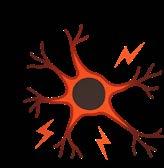
In a world that allows us to enter our hamburger’s calories into an app and video chat with our doctors to get prescriptions, the magic of ancient practices in healthcare is easily lost. Though such innovations in healthcare have gotten us incredibly far, Ayurveda, an ancient Indian system of medicine dating back over 5,000 years, still has some wise advice to offer us. Fortunately, it’s starting to gain more traction as people become more aware of natural remedies to health issues through the internet and social media, and begin to embark on their wellness journeys.
Ayurveda lifestyle—a system of medicine that perceives health as a harmonious blend of mind, body, and spirit. Its framework is built on balancing 3 energies, or doshas: Vata (air and ether), Pitta (fire and water), and Kapha (earth and water). Each individual is known to have their own unique mix of these energies, and Ayurveda determines lifestyle choices (diet, exercise, meditation, etc.) accordingly. However, Ayurvedic influence doesn’t stop at individual wellness. It’s rooted in Hinduism, where it is a path to dharma (righteousness) and moksha (liberation). In ancient texts like the Vedas and Upanishads, Ayurveda is not just known to be a medical system, but instead a way to align with cosmic forces. This philosophy views the body as a microcosm of the universe—meaning your health is intrinsically connected to nature’s greater order and the divine. Jumping back to the present, it is evident that healthcare is now defined by high-tech advancements and precision medicine. Advanced imaging techniques, genetic testing, and even treatments able to target mutations with a simple laser are just a glimpse into treatment options available today. The nature of healthcare today is exceptional at treating acute conditions and individual symptoms. However, here’s where it sometimes trips up: its strengths lie in addressing isolated, specific issues but not in understanding the body as a whole, almost like a machine’s separate parts being fixed when they break. For instance, it's incredibly easy to obtain a prescription for high blood pressure, but what caused the hypertension initially? Modern medicine is far more focused your numbers right than on addressing the root causes of your issues. This is where Ayurveda can come in! It offers us tools to restore balance in our bodies and its treatments. This may not be as instant as modern interventions, but it brings

long-term relief with them.
by Shreya Kumar Design: Chaunté Lewis

Chronic conditions such as arthritis, hypertension, and diabetes affect a large percentage of today’s population and can be effectively managed through Ayurveda. In cases of arthritis, Ayurvedic treatments such as panchakarma (a form of detoxification therapy) and using herbs such as ashwagandha and guggulu will reduce inflammation in the joints, improve joint function, and facilitate healing. Modern healthcare approaches may include joint replacements and drugs, while Ayurveda offers a holistic solution that is long-term and focused on overall health. As for stress and mental health issues, Ayurvedic solutions are rooted in calming the mind by balancing the doshas. Brahmi and saffron are herbs that can be paired with meditation and yoga to reduce stress levels and promote mental clarity. While modern healthcare is indeed becoming excellent at advancing mindfulness-based therapies and different mental health medications, these age-old practices are a toolkit that is historicallyproven to prevent stress from becoming a chronic issue in our lives.
Ayurveda is also helpful when it comes to treating digestive disorders and skin conditions. Acid reflux and irritable bowel syndrome can often be alleviated through dietary changes and herbal treatments such as triphala (a combination of 3 fruits native to India) and ginger. Psoriasis and eczema are also frequently treated with Ayurvedic topical herbs and dietary adjustments. Neem and turmeric are great examples of herbs that are used internally and externally on the skin for their antimicrobial properties. Dermatologists today may recommend steroid creams and antibiotics, but Ayurvedic approaches examine the root causes of these issues, which are often internal imbalances. From there, they can work to heal the skin from within.
It is certainly easy to wave off Ayurveda as an outdated branch of medicine, but underneath all the so-called “magic” is a system that provides an opportunity for everyone to heal their bodies in a gentle, long-term manner. Incorporating Ayurveda into modern medicine will supply us with power like we’ve never seen before as we discover novel treatments through the blending of ancient, Hindu medicine modern American care. As people increasingly seek personalized, preventative care, Ayurveda's core values of balance and wellness are destined to play a significant role in shaping the future of global healthcare practices.

In 1692, Bridget Bishop stood trial in Salem, Massachusetts, accused of witchcraft. What prompted this? A collection of strange outbursts of behavior, unexplained joint pain, and rashes that seemed to magically accrue overnight. Her peers, unforgiving townspeople, believed these instances had been the consequence of a curse. Some even believed she had been possessed by the devil themself. In today’s society, the evaluation of these events undoubtedly would have a severely different interpretation. Some medical professionals might have suggested she was suffering from conditions like lupus or rheumatoid arthritis; both diseases rooted in the field of autoimmunity.
Autoimmunity is when the immune system accidentally attacks one’s own healthy cells and tissues. Ultimately, this dysfunction can trigger a cascade of effects throughout the body, disrupting systems ranging from one’s joints and skin to their nervous and digestive systems. Autoimmune diseases are of significant concern today, affecting a substantial portion of the population. Autoimmune diseases affect approximately one in ten individuals worldwide, as supported by numerous studies in The Lancet. Another review performed by the pathology unit at Johns Hopkins estimated that these diseases affect about 3% of the United States population, which is approximately 10 million people. A more recent study published in the National Library of Medicine suggested this percentage was closer to 4.6% (~15 million). In terms of gender disparity, women are disproportionately affected by this category of diseases. Various modern studies published in the National Library of Medicine also suggest that in some cases females are nearly twice as likely to be diagnosed with such conditions. Autoimmunity has implications across the board, especially during reproduction. Certain autoimmune related antibodies are capable of crossing the placenta during pregnancy and potentially affecting the fetus. These antibodies are referred to as autoantibodies. An example of this is seen in neonatal lupus, an autoimmune condition that affects newborns as a result of these autoantibodies crossing the placental barrier.
two most common autoimmune diseases affecting the thyroid are HT (Hashimoto’s Thyroiditis) and Graves’ disease. Despite the confusing names, HT is characterized by an underactive thyroid, known as hypothyroidism. On the other hand, Graves’ disease is associated with an overactive thyroid (hyperthyroidism). The significance of these diseases to autoimmunity is rooted in their cause, as the signaling mechanisms being abused are triggered by these same autoantibodies.
Autoimmune diseases remain an active area of medical research, and for good reason. Disorders of this kind are typically chronic and have no cure, emphasizing the need to further research in this field. This development can aid in the understanding of autoimmunity as well as grant the opportunity to develop better treatments. Each new discovery in immunology brings hope that we can design and produce precise and effective interventions for those in need.
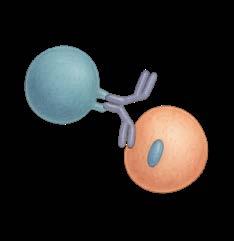
Despite many autoimmune conditions not having a set cure, the growing knowledge about how our immune system functions is already leading to revolutionized therapies. Over the past few decades, physicians have shifted from bluntly suppressing the immune system by deploying means such as corticosteroids to reduce inflammation, to deploying and developing more targeted strategies. Modern treatments tend to include specialized mechanisms called biologics, which are biologically engineered molecules (could be antibodies) that alter immune signaling with precision. This precision comes from the ability to specifically block particular inflammatory proteins or cells driving the autoimmunity on a broad scale in terms of patient to patient difference.

The most famous autoimmune disorders, ones that have the highest prevalence, are related to autoantibodies altering thyroid function. It is important to keep in mind that prevalence refers to the burden of a disease in a population, and not the risk of developing said disease. This risk is best explained by the incidence of a disease. The
Simultaneously, approaches such as precision medicine have been embraced by researchers. This kind of medicine aims to tailor treatment to each individual patient's unique needs. Taking into account their unique profile, physicians can determine specific immune pathways or genes being exploited by their condition, and as result, apply therapy to target these pathways promoting pathogenesis (disease progression). This personalized approach is not concrete and can vary from patient to patient, meaning one treatment can be chosen over another due to factors uncovered through testing, such as biomarkers or genetic patterns. Application of these medications has revolutionized care for many burdened by autoimmunity. Autoimmune diseases can be challenging, but the advances in immunology are offering an ever expanding toolkit at our disposal.

What does your BLood type reveaL aBout your heaLth?
by nina coTTone design: chaunTé leWis
Have you ever been asked what blood type you have? Whether you have seen this question in movies or shows, been asked it personally, or have never had any experience with it, your blood type is definitely information worth knowing. Why is this information important? If any situation arises where a healthcare worker asks you for your blood type, you will need to have an answer ready for them. They may ask this if something happens and you need a blood transfusion, or if you are interested in donating blood. There are four varieties: AB, A, B, and O. All of these can be positive or negative, resulting in eight possible blood types. So, what are the differences that characterize each blood type?
You may know your blood type and that you cannot mix different types, for example, someone with an O positive blood type cannot receive a blood transfusion from someone with an AB negative blood type. But do you know what each type represents? Each blood type is distinguished by the types of antigens they have, or, in other words, what substances each blood type contains that can trigger an immune response to pathogens, such as bacteria or viruses. Whether you have AB, A, B, or O type blood, everyone’s blood contains the O antigen as a base. Type A blood also will have the A antigen on red blood cells, while type B blood will have the B antigen. Type AB blood contains both A and B antigens on red blood cells. If you are type A, you can only receive blood from type A or O, while you can only receive blood from B or O if you are type B. If you have the AB blood type, you can receive a blood transfusion from any other blood type (if we disregard positive vs. negative, which we will talk about later). However, those with type O blood can only receive type O blood. This is because if you have type O blood, you only have O antigens, and you cannot receive blood that has antigens not present in your own blood. If you do, your body will not recognize these antigens, and determine them to be dangerous, and attack them. Whether your blood type is positive or negative depends on whether it contains the Rh factor. If you have the Rh factor, your blood is positive; and if you do not, your blood is negative. If someone’s blood is positive, they will not produce the anti-Rh antibodies, while someone with a negative blood type will when exposed to Rh-positive blood. If you have a positive blood type, you can receive a negative blood type, while if you have a negative blood type, you cannot. This is because the blood you are receiving will cause your body to produce anti-Rh antibodies and attack, causing an immune reaction. Because O-negative blood lacks A and B antigens and Rh antibodies, O-negative blood is referred to as the universal donor, as no other blood type will have an adverse reaction in response to receiving type O-negative blood. With this being said, AB positive blood is the universal acceptor, as someone with AB positive blood will not react to receiving any of the other types of blood.
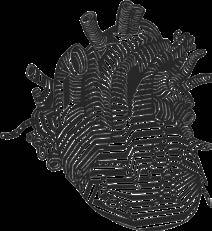
If an expectant mother has a negative blood type, and her baby has a positive blood type, this could lead to some complications since we know that Rh-positive blood and Rh-negative blood types are incompatible. As a result, the mother could have an immune reaction to the fetus, which could cause the mother to produce antibodies that destroy the baby’s red blood cells. This would result in the baby being born with anemia, jaundice, or could even cause death in extreme cases. While this is a scary situation, treatments exist to prevent complications like these from occurring. The most common one is the use of Rh immunoglobulin (Rhlg), which suppresses the mother’s immune response. Other risks are associated with blood types, such as whether you have type A, B, AB, or O blood. Research studies have shown that the risk of coronary heart disease and strokes tend to be lower in people who have O blood types. A possible explanation for this could be because other blood types have a higher chance of having higher cholesterol and greater amounts of clotting factors, also known as coagulation factors, which are proteins that cause the blood to solidify. People who have type A blood also seem to have higher cortisol levels, which, when paired with stress, can also increase the risk of heart disease. A study done at the University of Vermont College of Medicine showed that people with AB blood are more inclined to have memory problems and a higher risk for issues in cognition, but the reason for this correlation still remains unknown. It has also been shown that types A, B, and AB blood are at a higher risk for cancer; specifically, people who have type A blood are at a higher risk of developing stomach cancer. A cause for this could be due to the presence of H. pylori, a bacterium that has an easier time binding to red blood cells with type A antigens. This bacterium can also cause inflammation, pancreatic cancer, and ulcers. With this being said, it has also been found that peptic ulcers, a sore on the lining of the esophagus, stomach, or small intestine, occur most often in people with type O blood. This is because people with type O blood generally have higher levels of stomach acid. This being said, the primary factor of an H. pylori infection is the bacteria associated with it, not one’s blood type. Blood type is a variable that can put you at a higher or lower risk for these diseases, but it is not a cause of them. This can be said for all of the diseases listed above.
Now that we have the basics of blood types down, we can discuss more in-depth how your blood type can impact your life. Due to the different properties of each blood type, your type may increase or decrease your risk of developing certain diseases and conditions. One of these has to do with whether your blood is positive or negative.
So, while a certain blood type can increase your risk of diseases such as heart disease, stomach and pancreatic cancer, and cognitive problems, it is just one of the many variables at play and is not the sole or major cause of these medical complications. The main factor to take into account is lifestyle, which, when combined with a particular blood type, can lead to these diseases. There are many choices we can make to prevent these from occurring. These measures include staying out of highly polluted areas, maintaining a nutritious diet, exercising, and practicing healthy habits - such as staying away from smoking cigarettes and other substances. Although one should be aware that risk factors are not definitive, they are important to consider. When you are familiar with your blood type, you will be more informed of which risk factors could affect you. Thus, you are able to take this into consideration when making choices that impact your life, and be able to mitigate the chance of developing these diseases.
Many people do not know that their bodies are home to a diverse and vast collection of microorganisms that occupy various niches, including the gut, airway, skin, vagina, and more. Approximately 38 trillion microorganisms dwell on your body, and their metabolic byproducts may have implications for human health. Even more surprising than the existence of the microbiome itself is that new evidence suggests that your microbiome may be playing an important role in your health and immune system. One study shows that microbial metabolites have been shown to predict survival rates in elderly individuals. This information raises questions about how the microbiome can impact our health, specifically as new studies emerge linking the gut microbiome and the airway.
In order to understand how the human microbiome can affect your health and immune system, you must first understand the organisms’ metabolism. The microbes in your gut digest the fiber you eat, and in doing so, they produce substances called short-chain fatty acids (SCFAs). These SCFAs help lower inflammation and support your immune system. There is evidence to suggest that microbe-derived SCFAs shape the immune system of the rest of the body, making the gut microbiome a topic of interest for those who seek to ameliorate disease. SCFAs spread their beneficial effects to the rest of the body when they leave the gut and move to the bloodstream, reaching other organs. These SCFAs help protect the host: they improve lung health, fortify the lining of the intestines, prevent pathogens from invading the body, and
activate anti-inflammatory responses.
While its health benefits have been well-established, the gut microbiome can also shape the immunity of your respiratory system. This relationship between the gut microbiome and the respiratory system is aptly described as the “gut-airway microbiome axis.” Studies demonstrate a link between SCFA and respiratory disease. In adults, a reduced abundance of SCFA-producing bacteria has been associated with non-small-cell lung cancer, and in children, elevated fecal concentrations of SCFAs are associated with reduced risk for asthma development. Because SCFAs result from the undigested dietary fiber consumed by microorganisms of the gut, scientists have investigated the link between low fiber diets and risk for respiratory infection. In one model, mice who were fed a low fiber diet bore pups with more severe respiratory infection compared to a control group. This is because there was reduced secretion of an enzyme called FMS-like tyrosine kinase 3 ligand in the pups. This enzyme is a growth factor responsible for the proliferation of dendritic cells, a type of immune cell that protects the organism from pathogen invasion. Furthermore, the mice were lacking in a type of cell called Treg, a cell that keeps inflammatory immune response from damaging the body. What happened next with these mice showed strong evidence that lack of SCFAs resulting from the low fiber diet were to blame for these poor outcomes involving respiratory infection. When the research team supplemented the mice with propionate, an SCFA, the protection against respiratory infection was restored in the pups.
SCFAs are not the only byproduct of microbial metabolism that improves immune function. For example, desaminotyrosine protects individuals from influenza by enhancing the response of phagocytes, a type of immune cell that swallows up harmful microbial pathogens to protect you from infection. Another study shows that the composition of the gut microbiome influenced survival rates amongst mice following respiratory infection. When germ-free mice (mice without a microbiome) were supplemented with the gut microbiome from mice that survived infection, they were protected against infection. This suggests that the composition of the gut microbiome has wide effects on the immune system and can be protective against respiratory infection.
Interestingly, this gut-lung connection is a two-way street as respiratory infections can disrupt the gut microbiome. Respiratory infections can mess up the gut microbiome, leading to long-term effects. In one study, scientists examined the gut microbiome of patients during and after they had COVID-19. Even after infection, these patients exhibited an impaired ability to make SCFAs, Confirming that an infection in the airway altered the expression of SCFA producing genes in microbes of the gut.
When your gut microbiome is healthy, beneficial microbes, or symbionts, dominate your gut and provide the aforementioned health benefits. “Bad” microbes, or pathobionts, live there in very small numbers because they struggle to compete with the prosperous symbionts. However, when the microbiome is disturbed by infection or antibiotic use, and some microbes perish, there is an “opening” for pathobionts to flourish and multiply. When these disturbances occur, it can cause impaired immune response and increased severity of viral infections. When antibiotics are used, microbes of the gut do not express enough type I and type II interferons, proteins that help the body to keep viruses from replicating.
New information about the gut airway axis provides new insights into how the microbiome can be a target for therapies to treat respiratory diseases. By altering the microbiome of an individual, either through diet or through live supplementation, therapies can attempt to improve respiratory health in sick patients. In one study, mice were prenatally treated with the live microorganisms Lactobacillus johnsonii or Helicobacter pylori, which resulted in airway protection of the offspring. For humans, on the other hand, daily oral supplements of Bifidobacterium lactis in adults with asthma improved their symptoms compared to the placebo group. These new therapies represent a new type of holistic medicine which could help people suffering from respiratory diseases. By taking full advantage of the communication between the gut and airway, these new therapies leverage the power of the microbiome, allowing these microorganisms “do all the work” to restore health as the patient reaps the benefits.
Illustration:
by Bridget Dowd
Ashleigh morris
Design: Chaunté
Lewis

Each human being is a universe in their own right. We are skin-wrapped celestial bodies, filled with tens of trillions of cells, whose roles and processes map across our bodies like constellations. While cells are known to be the building blocks of life, it is necessary to recognize how they, too, are alive—they live and die, replicate and reproduce, and have organelles that act like organs (National Library of Medicine). A singular cell may be microscopic and beyond our realm of perception, but as a mass, they make up entire bodily systems that keep us healthy.

So, what if a cell fails to fulfill its role as a cog in the human machine? Sometimes, a cell becomes malignant and begins to grow abnormally. An immune system’s lymphocytes may start to attack the body’s own cells. A faulty protein may be produced. In the brain, neurons might begin to inexplicably degenerate prematurely. Why does this happen, and what are the origins of such events? What are the pathways, connections, and consequences leading to detrimental disruptions in the body when other cells follow
Simply put, much is unknown about the makeup of an individual cell as well as how cells interact with one another. The need to answer these questions, among many others, was a prime catalyst for the inception of the Human Cell Atlas. The Human Cell Atlas is a global consortium with the ultimate goal of creating a three-dimensional atlas of every human cell to build a strong foundation for understanding not only human health, but the diagnoses and prognoses of human diseases. Such a feat would largely advance every facet of current biological and medical research and techniques (Human Cell Atlas).
The consortium was co-founded in 2016 by Dr. Aviv Regev and Dr. Sarah Teichmann. Since its inception, the project has garnered
support from over 3,000 members from nearly 2,000 institutions across 99 countries (Human Cell Atlas). “By creating this atlas through an open, international effort, we are building a new research tool for the whole community,” Dr. Regev said during one of the first meetings the initiative was discussed (Broad Institute). Indeed, the grass-roots, international, open-source nature and values of the project cannot be overstated. Its progress and successes are thanks to the community of scientists, engineers, mathematicians, and clinicians whose ongoing efforts have been knitting the blanket of the cellular body for nearly a decade now.
Those involved in the Human Cell Atlas plan to achieve their objectives through building and utilizing advancing technologies. This includes single-cell RNA and genome sequencing, mass cytometry, multiplex in situ analysis, and cell lineage determination. Much of these techniques emphasize mapping the blueprint of cells and identifying signatures of cellular products, such as proteins and antibodies (eLife).
Essentially, single-cell and spatial genomics are being used alongside computing to determine which, when, and where an individual cell’s genes are expressed. This allows scientists to more robustly identify cell characteristics and functions for pinpointed mapping onto appropriate organs and tissues (Human Cell Atlas).
Dr. Teichmann stated the groundwork findings of the project would “deliver a wide range of important insights—from a better understanding of why miscarriages and genetic developmental disorders happen, through to understanding childhood cancers that have their root in development” (Broad Institute). Currently, the first draft of the atlas is being created through networking major human organs and tissues, such as the heart and immune system (Human Cell Atlas).
Beyond the atlas itself, the project produces research to understand disease development and outcomes, supplying about 200 scientific publications to date. As expected, the use and development of groundbreaking technology to understand human health have reciprocally led to computational innovations in modeling illness and treatment. This ranges from more novel viral infections like COVID-19 to the most common, fatal chronic illnesses worldwide, like heart diseases. Moreover, in line with its globally inclusive mission, researchers in the consortium are targeting diseases with disproportionate outcomes and considerations for particular underserved populations, including lower-income and ethnic minority groups (Human Cell Atlas).
Undeniably, the Human Cell Atlas has greatly contributed to the molecular understanding of humans and their diseases. The unprecedented intellectual yearning to know and name every cell in the human body is one of many examples portraying humanity’s fundamental urge: to understand who we are. This phenomenon is not unique to one geographical region or kind of person. From the moment the human race evolved in Africa some 300,000 years ago, to the prophetic and philosophical teachings of figures like Buddha and Muhammad, and the Englishman Robert Hooke’s discovery of the cell in 1665, scientific collaborations such as the Human Cell Atlas show that remembering this foundational purpose of human life is key to pursuing community and ambitions that span the globe.
OOR

“ONonverbal Cues
One simple yet highly effective technique in preventing the Door Handle Phenomenon is embracing intentional silence. In a world where conversations move quickly, silence can feel uncomfortable—but in medical settings, it can be a powerful tool. Physicians often feel compelled to fill every pause, swiftly moving from one topic to the next. However, allowing moments of silence after asking, “Is there anything else?” gives patients the space to gather their thoughts and share lingering concerns they may have otherwise suppressed. Borrowed from psychotherapy and qualitative research interviews, this technique leverages the natural discomfort of silence to encourage deeper disclosure. In medicine, every detail matters. A few seconds of patience can make all the difference.
Technology Beyond interpersonal strategies, technology offers innovative solutions to help mitigate the Door Handle Phenomenon. Digital tools such as electronic health records (EHRs) and patient portals allow patients to document concerns ahead of time, giving doctors a clearer understanding of what needs to be addressed during the appointment.
Telemedicine and virtual follow-ups provide an alternative avenue for discussing lastminute concerns without requiring an additional in-person visit. Meanwhile, AI-powered chatbots and symptom checkers can prompt patients to articulate concerns they might hesitate to mention otherwise. By integrating these technological advancements, healthcare providers can create more opportunities for patients to voice their concerns in a structured and proactive manner.
The conclusion of a medical visit often marks a peak in a patient’s emotional intensity, making it the moment they finally blurt out what may have been weighing on them the entire time. This hesitation can stem from a variety of factors—fear of judgment, embarrassment, or an underlying sense of vulnerability. The physician-patient relationship is often defined by a distinct power dynamic, where doctors hold the expertise and control the conversation, while patients may feel like passive participants. Many patients unconsciously delay sharing important concerns, perhaps testing whether their issue is “serious enough” to warrant attention. Others may feel intimidated or reluctant to interrupt what seems like a structured, time-sensitive visit. Recognizing these psychological barriers is essential in addressing the Door Handle Phenomenon and ensuring patients feel comfortable sharing concerns earlier in their appointments. A physician’s bedside manner is pivotal in fostering an environment where patients feel at ease. A hurried or detached approach can reinforce patient hesitation, whereas an empathetic and engaged demeanor can make all the difference. Simple yet intentional actions—maintaining open body language, demonstrating active listening, and periodically checking in—can signal to patients that their concerns are valid and welcomed. Strategically asking, “Is there anything else you’d like to discuss today?” or “Do you have any concerns we haven’t covered?” before wrapping up an appointment can prevent crucial concerns from surfacing at the last possible moment. This proactive approach helps bridge the communication gap and fosters a stronger sense of trust between patients and providers.
h, by the way…” the patient remarks just as their provider reaches for the doorknob to conclude the visit. Recognizing the weight of these last-minute disclosures, the doctor pauses, sits back down, and offers the patient a few more minutes. What follows could be a minor concern—perhaps a temporary bruise—or something far more serious, like a small lump that turns out to be cancer. These eleventh-hour revelations often hold crucial insights into a patient’s condition, details they may have been hesitant to share earlier in the visit. However, healthcare providers balancing jam-packed schedules in this situation are often confronted with a difficult choice: either investigate the concern immediately or defer it to a follow-up visit, running the risk of delaying a critical diagnosis. This dilemma is widely known as the Door Handle Phenomenon. This occurrence sheds light on multiple facets of patient care, from the psychology behind patient hesitation to the need for more effective communication strategies in medical visits. Should patients arrive better prepared for their appointments, or should healthcare systems rethink appointment structures to ensure patients never feel rushed? Addressing these questions brings us closer to a more patient-centered approach in medicine.
Communication Strategies
Addressing the Door Handle Phenomenon should begin at the foundation of medical training. While medical education traditionally emphasizes diagnostic and technical expertise, effective patient communication is equally vital in delivering quality care. Medical curricula should incorporate structured training on active listening, non-verbal cues, and strategies for reducing patient hesitation. Role-playing exercises and simulated patient interactions can prepare future physicians to recognize the signs of an unspoken concern and encourage patients to voice them earlier. Additionally, teaching future doctors how to structure appointments with intentional pauses can ensure patients feel heard throughout the visit, not just at the last second. By embedding these skills into medical education, we can nurture a new generation of healthcare providers who prioritize patient-centered communication, ultimately improving the quality of care.
Addressing Power Dynamics in Healthcare
Conclusion
The Door Handle Phenomenon is more than just a frustrating quirk of medical appointments—it underscores deeper issues in patient psychology, provider communication, and systemic healthcare structures. Tackling this challenge requires a multifaceted approach: refining bedside manner, integrating effective communication strategies into medical education, embracing intentional silence, and leveraging digital tools to enhance patient engagement. At its core, medicine is about human connection. By creating a space where patients feel heard and empowered from the beginning to the end of their visit, we can foster trust, improve patient outcomes, and ensure no concern—no matter how last-minute—goes unaddressed. As the conversation around patient-provider communication evolves, it is up to both individuals and institutions to pave the way for a more inclusive and patient-centered future in healthcare.
by Lucy Xu
Post-World War II, the United States of America and the Soviet Union found themselves in another fight against each other, both racing to have the most superior technology. The nations set their sights on Outer Space. The Cold War further fueled this arms race, and soon, the goal became clear: to land the first man on the Moon.
Although it was the President of the USA, John F. Kennedy, who first declared this goal, the Soviet Union took home the first win. On October 4th, 1957, the Soviet Union launched Sputnik 1, the first artificial satellite, into orbit. The launch of Sputnik 1 marked the official start of the “Space Race” and the beginning of many technological advancements worldwide.
The Soviet Union continued to make leaps forward, with the launch of Sputnik 2, sending the first Earthling into Space, a dog named Laika. The United States was not far behind and on February 1st, 1958, the American satellite Explorer 1 launched into orbit. However, the U.S.S.R. continued to make history, as only two years later, Yuri Gagarin became the first man to orbit the Earth, traveling on the spacecraft Vostok 1. The Soviet Union would soon face several blunders as its lead engineer would suddenly pass away.
Neither nation had the rockets or engines powerful enough to land a man on the Moon; however, the United States kept to its step-by-step methodology, with each mission expanding on the last.
The Mercury and Gemini missions played a huge role in preparing the U.S. for its famed Apollo missions. Project Mercury achieved many American firsts: Alan Shepard was the first American to leave the atmosphere, and John Glenn was the first to orbit Earth. The Gemini missions introduced two-person spacecraft, long-duration flights, and the resilience of astronauts, all key developments in securing success for the Apollo missions.
On July 16th, 1969, astronauts Neil Armstrong, Edwin “Buzz” Aldrin, and Michael Collins set off on mission Apollo 11 and landed on the Moon’s surface four days later. Famously, this moment became “one small step for man, one giant leap for mankind.” This effectively concluded the Space Race, and despite the low start for the USA, they had won.
While immense public attention helped fuel the race, the possibilities available to both nations relied on their scientists, engineers, and designers.


The Soviet Union’s initial successes are credited to the man known as the Father of the Russian Space Program, although his identity was kept a state secret until his death in 1966. Sergei Korolev was born in 1907 and joined the University of Moscow with an interest in rocket propulsion. He founded the Group for Investigation of Reactive Motion, where he developed the first Soviet liquid-fueled rockets, but was soon arrested under the Stalin administration. He was given a chance by a famous aircraft engineer at the prison and was tasked with designing a Soviet version of the German V2 missiles. The result was the R1 rocket, the precursor to the Scud missiles still used today. The R-7 rocket became the technology that launched Sputnik 1 into orbit and was further improved for Yuri Gagarin’s flight on Vostok. Korolev continued in the Space Race, proposing a 100-m tall rocket, named N-1, to reach the Moon. These plans never came to fruition, however, as in 1956, Korolev was diagnosed with colon cancer and died undergoing surgery.
After his death, the Soviet Union struggled to achieve another Space success, facing four disastrous launches. At the same time, America, which had been developing its lunar landing for three years, reached the Moon. Sergei Korolev’s work remained significant even after his death, as the family of rockets he designed continued to hold potential for technological progress.
Across the globe, in the United States, several unrecognized scientists and mathematicians are to be credited for their victories in the Space Race. NACA, the precursor of NASA, was known to hire women as “human computers”, or people who could do mathematical calculations and equations by hand. Katherine Johnson was one of these human computers, handpicked as one of the three black students to integrate West Virginia’s graduate schools. Johnson took an opportunity at NACA’s Maneuver Loads Branch of the Flight Research Division and was tasked with analyzing data from flight tests and plane crashes due to wake turbulence. Throughout the Space Race, Johnson’s calculations were pivotal in American success. She performed the trajectory analysis on Alan Shepard’s mission Freedom 7 flight, as and became the first woman in the Flight Research Division to be a credited author of a research report. Johnson further proved her intellect in NASA’s preparation for John Glenn’s 1962 flight, where the astronaut called for Johnson specifically to run the trajectory calculations by hand, rather than trust the programmed computers. The triumph of the orbit was a turning point in the competition between the United States and the Soviet Union. It wasn’t until much later that Katherine was recognized for her feats. In 2015, she was awarded the Presidential Medal of Freedom, the highest civilian honor. In 2017, the movie “Hidden Figures” was released, capturing the underrated work of her and other women of color at NASA.
A nation’s greatness relies on its people, and this is seen clearly in the Space Race between the two global powers. Relying on the talents and intelligence of the scientists and designers of their nation, both the Soviet Union and the United States made vast technological advancements in space exploration and rocket projectiles. It was hard workers like Sergei Korolev and Katherine Johnson who made the success of their country possible, and ultimately, what fuels global advancements for all.
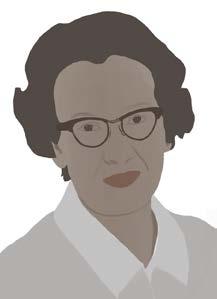
Katherine Johnson Aug 26, 1918 - Feb 24, 2020
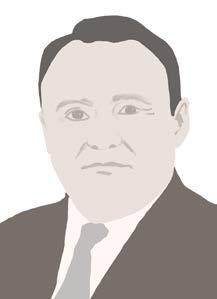
Sergei Korolev Jan 12, 1907 - Jan 14, 1966
by Veronica Richmond Illustration & Design: Veronica Richmond
“We’re relying on your generation to solve our problems. We’re sorry.”
I’m sure you’ve heard this phrase, or one similar, before. This rhetoric, however generous in intention, puts immense pressure on young people and college students, while simultaneously making us feel alone in this effort. Why do the past generations get to step aside and drop their problems onto us?
Indeed, the exhaustion perpetrated by such statements is widespread enough to have a coined name – climate fatigue. Even those who recognize the stark reality of climate change are at risk of becoming desensitized, or even demoralized, by the stream of information and studies showing how cataclysmic and complicated the issue is. With 27% of Americans believing humans are not primarily responsible for climate change, and 7% believing it is not happening at all, convincing them that it is a real, anthropogenic problem feels like half the battle. But on top of that, the majority of Americans who agree climate change is human-caused are still resistant to making change: 62% agree that we could slow, or even reverse, climate change, but aren’t willing to change their behavior to do so.
This produces a cycle of hopelessness, as seeing others stagnate instead of being environmentally conscious can pressure one to do the same. The phrase “tragedy of the commons,” coined by ecologist Garret Hardin to describe this concept, sounds stark. And indeed, the outcome is if left unchecked. But as we’ll see, one researcher was determined to make a global change and succeeded.
someone are that the issue must be personal and perceptible. However, motivated people with no route to mobilization will likely peter out, as we’ve seen during the current climate crisis. That is why the last P is the most critical – practical solutions. With the ozone layer, stopping the use of CFCs was an uncomfortable, but very practical solution. This union of the 3 P’s led to the successful international adoption of the Montreal Protocol to phase out CFCs, which has shown success in recovering the ozone layer and helping close the hole.
With climate change, it’s less straightforward. There are more bad actors leaning into the Tragedy of the Commons now than there were CFC investors. Indeed, America’s largest gas and oil companies have spent millions of dollars convincing the people that recycling is a valuable and feasible way to help the environment, as a way to take the spotlight and blame off of them. It feels rather hopeless learning that thousands upon thousands of empty planes depart on wasteful “ghost flights” every year, with the sole purpose of meeting airport traffic quotas. One may ask: How can throwing my yogurt container in a blue bin help? How does taking a shorter shower help, when asking ChatGPT 10 questions uses 2 liters of water?
This produces a cycle of hopelessness, as seeing others stagnate instead of being environmentally conscious can pressure one to do the same.
In 1985, a groundbreaking Nature article announced the presence of an “ozone hole” above Antarctica. Over the next two years, atmospheric chemist Dr. Susan Solomon led two expeditions to prove her theory that chlorofluorocarbons (CFCs), common halocarbons used in refrigerators and aerosols at the time, were responsible for ozone depletion. Scientifically, her work was remarkable, but convincing the globe to ban these common substances proved to be a near-impossible task.
However, Dr. Solomon had a plan. Nicknamed “The 3 P’s”, her strategy for solving any environmental problem requires knowledge and connection in three areas. The first two steps to motivating
It’s true that it’s a matter of numbers, but that is actually our advantage, according to Dr. Solomon. When people join together, we can demand change. Whether by voting, participating in activist groups, or just talking to the people around you, you can help reinvigorate people by counteracting their peer-pressured inertia and learned helplessness. Using our collective voices and wallets can pressure industries to change, so long as we don’t lose hope. We have the power to steer technology, motivating industries to change with our demands, which will then motivate governments to further push society towards effectively tackling climate change, whether by funding research or enacting regulations.
Government regulation, in fact, is one of the standard welfare economic solutions to the Tragedy of the Commons. Long-term cooperation is critical to conserve our planet, and spreading the message through Dr. Solomon’s 3 P’s will help reinvigorate our generation, as well as those before, to join together and pressure both industries and governments towards a healed Earth and a brighter future.


